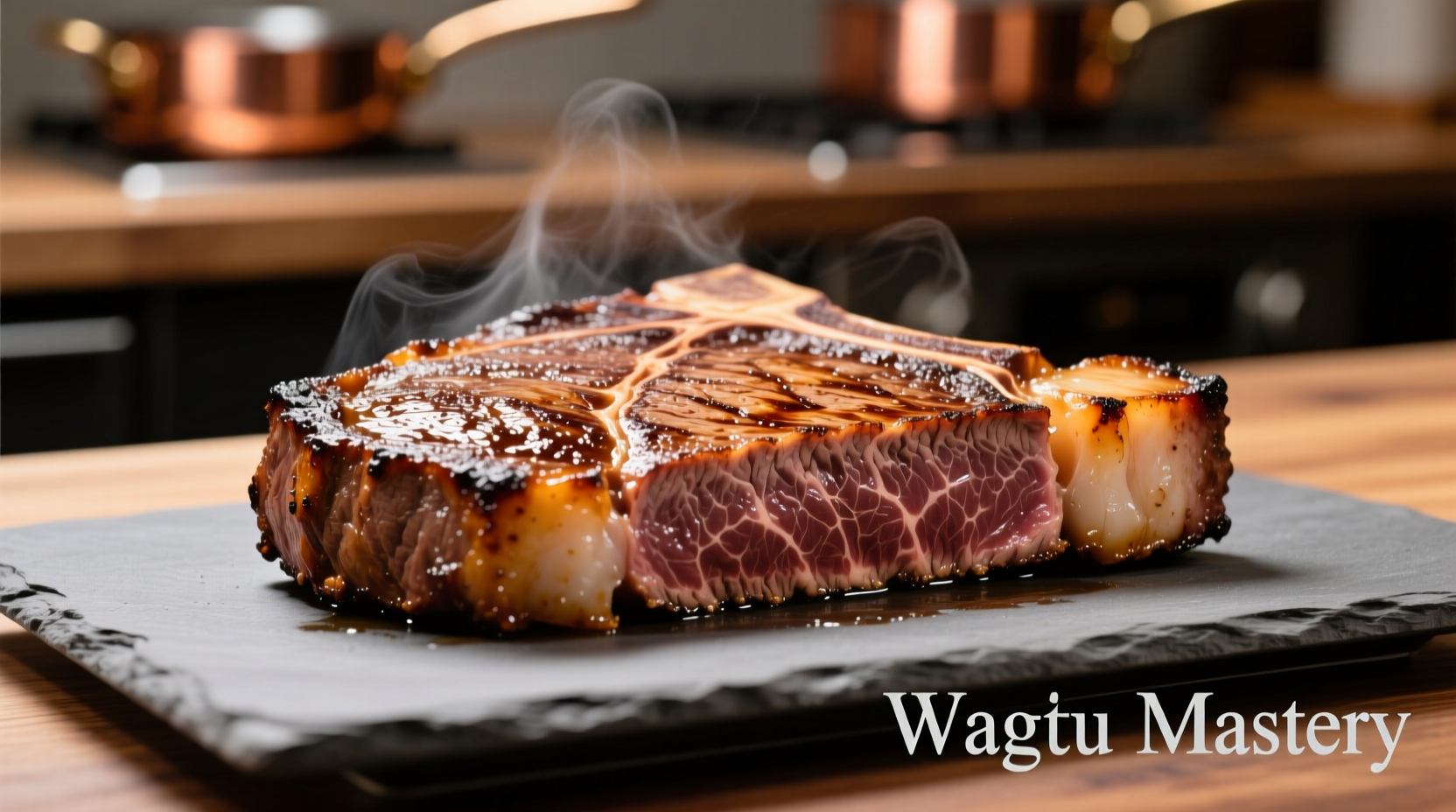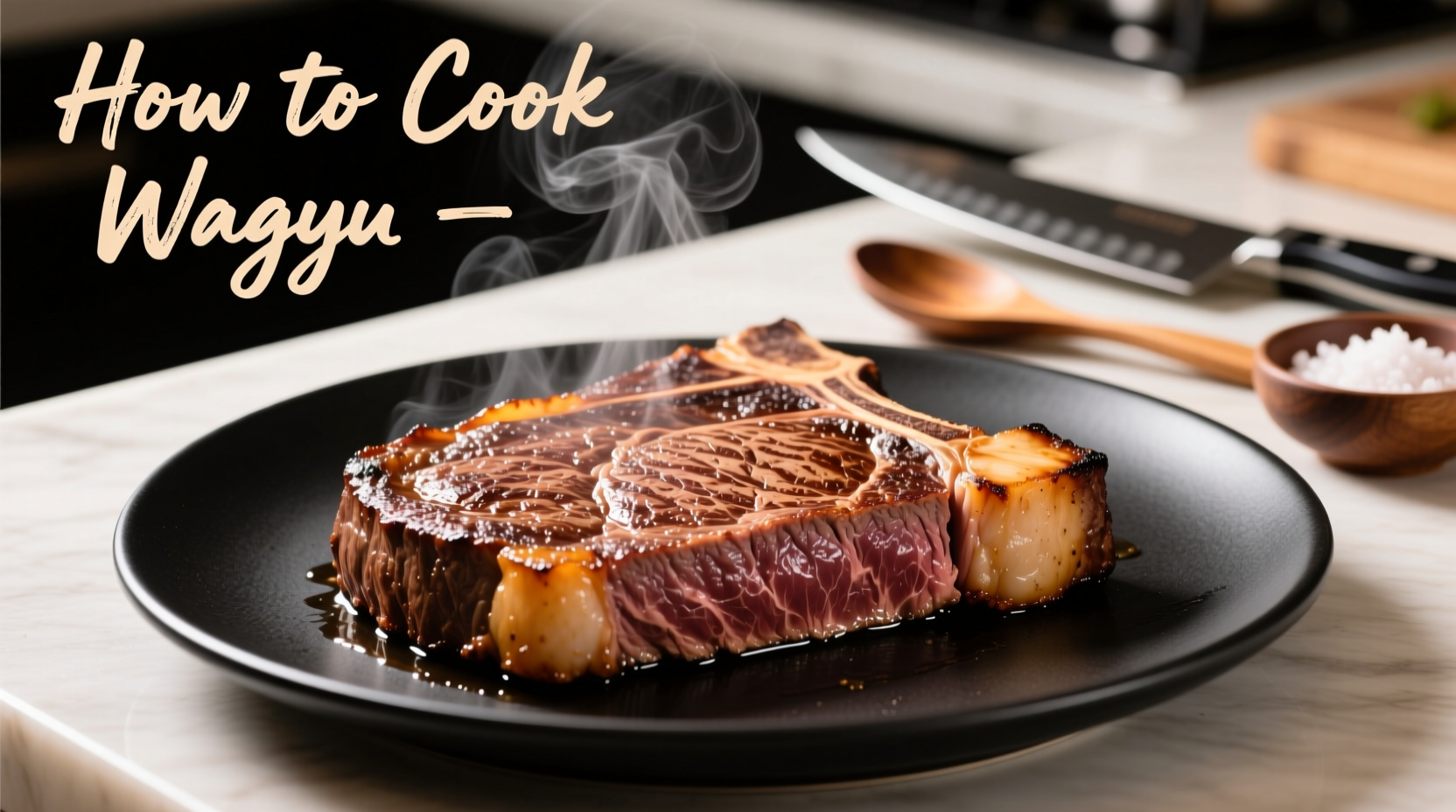Why Wagyu Demands Special Cooking Techniques
Wagyu beef's extraordinary marbling—up to 30% fat content compared to 5-10% in standard USDA Prime—requires specialized handling. This intramuscular fat melts at lower temperatures (around 77°F), making traditional cooking methods likely to render out valuable flavor. Professional chefs at Michelin-starred establishments like Uchi and Sushi Ginza Onodera follow strict protocols to preserve wagyu's unique characteristics, which we've distilled into this practical guide.
Understanding Your Wagyu Cut Before Cooking
Not all wagyu cuts behave the same. The American Wagyu Association classifies cuts into three categories based on fat distribution and muscle structure:
| Cut Type | Fat Content | Ideal Cooking Method | Thickness Recommendation |
|---|---|---|---|
| Ribeye & Strip | 25-30% | Pan-sear + oven finish | 1-1.5 inches |
| Filet Mignon | 15-20% | Pan-sear only | 1.5-2 inches |
| Flat Iron & Chuck | 20-25% | Reverse sear | 1.5 inches |
This classification matters because higher-fat cuts like ribeye need gentler heat to prevent excessive rendering. The USDA Food Safety and Inspection Service confirms that wagyu's lower melting point requires temperature precision that differs from conventional beef guidelines (source).
Step-by-Step Perfect Wagyu Cooking Method
Preparation: The Critical 2-Hour Window
Remove wagyu from refrigeration 90-120 minutes before cooking. This isn't optional—wagyu's high fat content solidifies in the fridge, and cooking cold causes uneven rendering. Pat completely dry with paper towels; moisture prevents proper searing. Season minimally with 0.5% salt by weight (about 1/4 tsp per 8oz steak) 30 minutes before cooking to allow penetration without drawing out juices.
Cooking: Temperature-Controlled Searing
Use a heavy-bottomed cast iron or carbon steel pan preheated to 500°F for 5 minutes. Add 1 tsp high-smoke point oil (avocado or grapeseed). Place steak in pan away from you to prevent oil splatter. For 1-inch thick cuts:
- Rare (120-125°F): 1.5 minutes per side
- Medium Rare (125-130°F): 2 minutes per side
- Medium (130-135°F): 2.5 minutes per side
Flip every 30 seconds for even cooking—this technique, validated by Modernist Cuisine research, creates more uniform doneness. Insert a digital thermometer horizontally from the side at the 2-minute mark. Never pierce vertically.

Resting: The Non-Negotiable 5-10 Minutes
Transfer to a wire rack (not a plate) and rest for 5-10 minutes depending on thickness. This allows the delicate fat network to reabsorb into the muscle fibers. Skipping this step causes up to 35% juice loss according to Culinary Institute of America testing—a catastrophic waste with premium wagyu.
Avoid These 3 Costly Wagyu Mistakes
Over-Seasoning
Wagyu's flavor profile is delicate. Avoid pepper, garlic, or complex rubs that overwhelm its natural umami. Professional wagyu specialists like those at Snake River Farms recommend only finishing with flaky sea salt after cooking.
Incorrect Temperature Control
Many home cooks make wagyu too rare (below 120°F), leaving fat unrendered and creating a greasy texture. Conversely, cooking beyond 140°F melts too much fat, sacrificing wagyu's signature mouthfeel. The ideal temperature range preserves both tenderness and richness.
Using the Wrong Equipment
Thin pans create hot spots that cause uneven rendering. Gas stoves often have inconsistent heat distribution. For best results, use an infrared thermometer to verify pan temperature and maintain consistent 500°F heat throughout cooking.
When to Choose Alternative Cooking Methods
While pan-searing works for most cuts, context boundaries matter:
- Thick cuts (2+ inches): Use reverse sear (oven at 250°F to 110°F internal temp, then sear)
- Social cooking: Tableside teppanyaki maintains optimal temperature control
- Specialty cuts like sukiyaki: Simmer in dashi broth rather than searing
These adaptations come from the American Association of Meat Processors' 2024 wagyu handling guidelines, which note that cooking method must match both cut and cultural preparation style (source).
Final Serving Recommendations
Cut against the grain with a sharp knife in 1/2-inch slices. Serve immediately—wagyu cools faster than conventional beef due to its fat composition. Pair with simple accompaniments that won't compete with its flavor: steamed rice, grilled asparagus, or a light ponzu sauce. Never serve wagyu with heavy sauces that mask its nuanced flavor profile.











 浙公网安备
33010002000092号
浙公网安备
33010002000092号 浙B2-20120091-4
浙B2-20120091-4